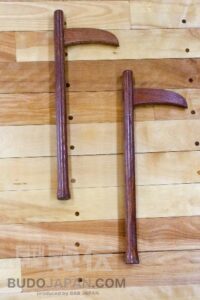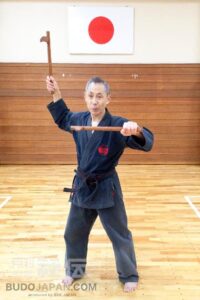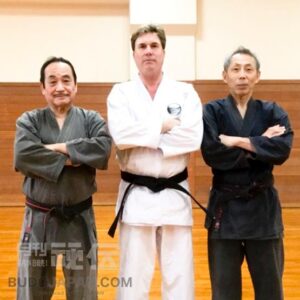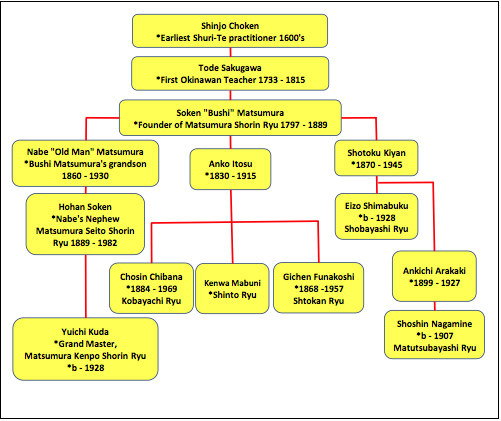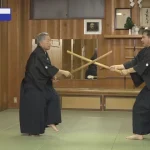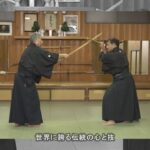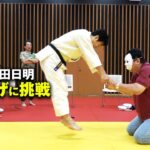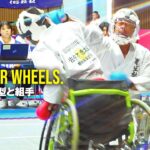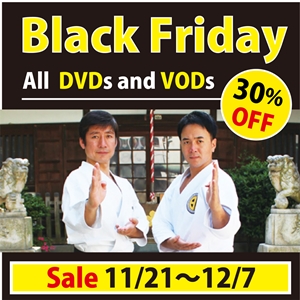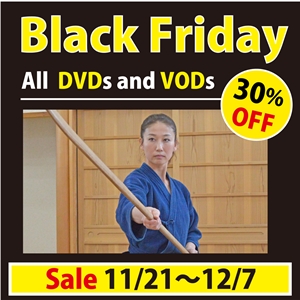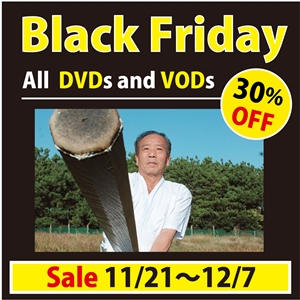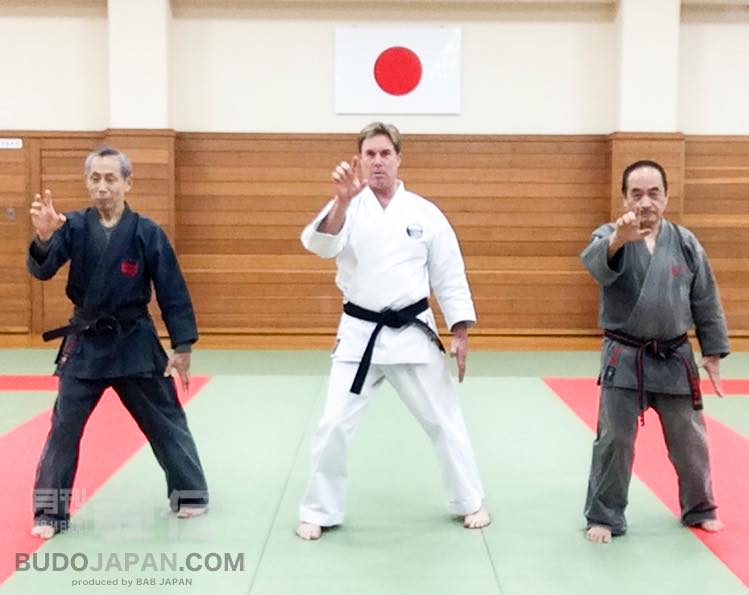
Kata Seisan
text by Tim Johnston
This is the Story about my fortunate meeting of Two Amazing high-level Karate Instructors who just happened to both Speak English. Shindo Sensei and Adachi Sensei of the Chiba, Narita DoJo. Through their amazing friendship and skilled instruction, I received My San Dan (3rd level Black Belt). It certainly helped as both of them give me Private instructions. Shindo sensei is Kyu Dan (9th level) and Adachi Sensei is Hachi Dan (8th level).
My name is Tim Johnston. I grew up in California and moved to Japan for work got married and had a child. I had always wanted to study martial arts since I was a kid and was inspired by Bruce Lees movie ” Enter the Dragon”.
My lucky fate of meeting the right people and actually beginning martial arts happened one day when I walked into the local gym in Narita, Chiba to do some weight training. A Japanese man said “Hello” to me. I asked him what he was doing in the gym. He said I teach Karate here and often come here to train in private.
I was drawn to his vibrant enthusiasm and the fact he spoke English. After some weight training, I walked up to the 2nd Floor where the Dojo was located and saw many various Okinawan weapons on the floor related to Kobudo such as the Jo (staff stick) Nunchucks, Sai etc.
He began to show me some of his various Kata. I was amazed with his low stance, mental focus and skill level. After he finished, he gave me his phone number and said if you’re interested in Karate? I can teach you!
I lost his phone number and went back to the Dojo on several occasions but couldn’t find Shindo Sensei there. I went back to do weight training but, still no Shindo Sensei. Finally 2 years later, I happened to find his phone number in my desk drawer. Immediately I called and wondered if he would even remember me? He answered and said come to the Dojo next Monday.
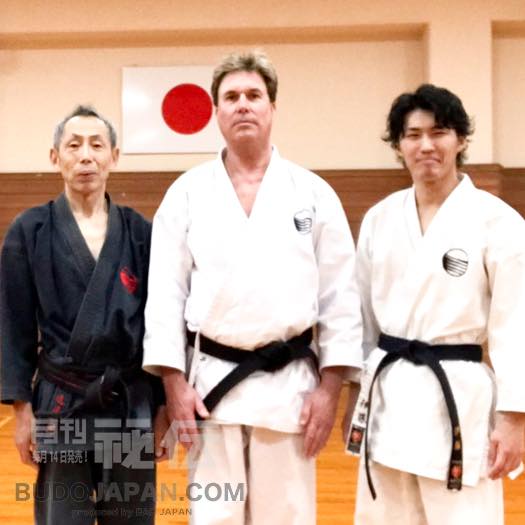
Shindo Sensei(left),Mr.Tim Johnston(center)
When I arrived, he formally introduced himself once again, He said I am Shindo. He said he was in his 70’s and had been practicing karate for nearly 45 years. He told me he is 9th dan in Shorin ryu karate. He explained to me about his karate styles organization and the fact he was chosen as only one out of 10 people who were invited once a week to train with the Head Sensei (Kawamoto Sensei) based on his high rank, skill and most importantly his character.
Kawamoto only chose “the cream of the crop” with the most potential. This class was taught with strict discipline and no talking while training focusing on mental focus, breathing and the utmost manners and respect. Kawamoto Sensei is an old school Karate master who is 10th dan and prides himself on the strictest form of code and conduct. He makes sure you are breathing at the right times and utilizing your power. If he doesn’t see you are doing it correctly you might be scolded or sent home.
I later asked Shindo Sensei………. Why are you so kind and speak English so well? He said I am a Christian and furthermore I’m a retired Air Traffic controller so, I needed English for my job. This man seemed to be the perfect match for me as I felt a connection immediately to his kind presence and the way he carried himself.
I asked him do you drink alcohol and he said, No! Never nor have I ever smoked. I was even more amazed at his overall self-control and dedication to keeping his body clean and pure through his 70 plus years.
After some basic conversation to break the ice, Shindo Sensei began to show me the basic stances, punches and kick routines and how to generate the most power using correct hand placement while breathing. He had me begin with the basic Kata “Ananku” after the first 2 weeks of lessons. He told me another of his friends/Students would like to practice with us. I said sure, of course.
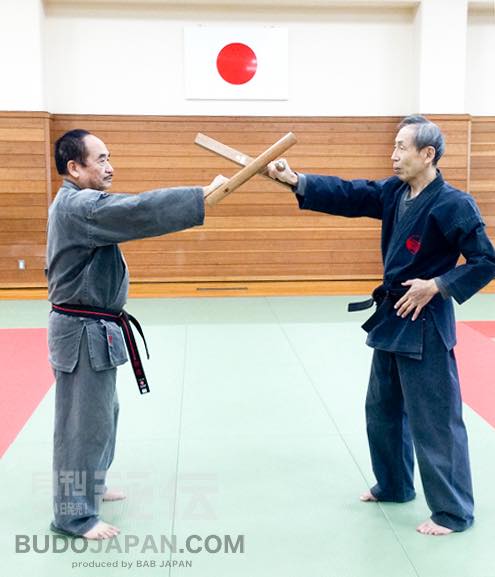
Shindo Sensei(right) and Adachi Sensei(left) performed Tonfa’s Kata.
The following week in walked this man with a cowboy hat, boots, bolo tie with a moustache, ear rings with all kind of skull finger rings etc. He said in Perfect English nice to Meet you I’m Adachi call me “Cisco” I asked him are you Japanese based on his atmosphere and style.
It turned out he had been practicing under Shindo Sensei for 35 plus years. He was also retired from the Airport Air traffic control. He told me of his Childhood story.
Adachi Sensei is Japanese but born in China and lived there due to his Father being a highly skilled Doctor.
Adachi Sensei lived in China until he returned to Japan at the age of 14 to enter High school. He comes from a highly educated family of doctors and his descendants were Samurai. He lent me many books about his family. I was in awe of his life story.
I couldn’t believe when he told me he was in his late 70’s. (By the way last week, he turned 81). I love his mellow and easy-going attitude. He is also fluent in 3 languages. Shindo Sensei often pairs me up to go through offense and defense drills with Adachi Sensei. He is the oldest karate practioner within our organization.
He often tells me to hit him as hard as I can and during our Kumujytsu practice he often is flipped to the floor only to jump up as if he is still in his 30’s.
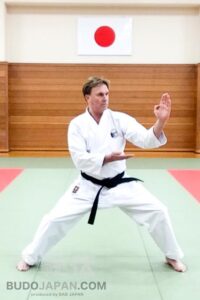
I have now learned so much in such a short time thanks to these 2 wonderful Sensei’s. I have learned the Kata Ananku, Wanshu, Seisan and Bassai thus far along with ” Hoen Jo Shin and many other various Tanto and Tonfa techniques along with the philosophy behind them and how to utilize power, core stance, breathing etc.
These 2 men have become good friends and now I look forward to our practice every week. They have inspired and motivated me more than any words could say! They Volunteer their time to teach me and I am forever grateful to these 2 wonderful men. Shindo Sensei has showed me the true spirit of Karate and has inspired me to someday open a dojo in California to share the knowledge passed down from Kawamoto, Shindo and Adachi Sensei’s.
Martial Arts has taught me the Value of discipline, routine, respect, hard work and has given me more confidence and made me a more well-rounded person in my daily life. Thanks to these 2 amazing men I have been able to keep my mental outlook strong during this COVID-19 pandemic.
I’ve had a lot of time to reflect on my life, my regret is I didn’t start practicing Karate at a much younger age. But the best thing was meeting these 2 amazing Japanese men who have changed my life and taught me the spirit and meaning of Okinawan Shorin Ryu Karate.
SHORIN-RYU
Shorin-Ryu is one of the major Okinawan martial arts and is one of the oldest styles of Karate. The kanji(小林) meaning is “small” and “forest” and pronounced Shorin in Japanese, are also used in the Japanese words for Shaolin(少林).
Most modern Karate styles can be traced to the famous Satunuku Sakugawa (1733 – 1857) called “Tode” Sakugawa. Sakugawa went to China and trained under KusanKu. KusanKu had been a military attache in Okinawa. When master KusanKu returned to China, Sakugawa followed and remained in China for six years. In 1762, he returned to Okinawa and introduced his Kempo (“Fist Way”). This resulted in the Karate we know today. Sakugawa became a famous Samurai. He was also the Sensei of Sokon Matsumura.
Sokon Matsumura, also known as Bushi (warrior) and Shuri Matsumura (1797-1889), was one of the most renowned martial artist of his time. He is known as the founder of Shorin-Ryu Karate. Matsumura is responsible for carrying on the teachings of the original Shuri-Te. Matsumura chose the Shorin-Ryu (Shaolin in Chinese) as a name of the Ryu (style) due to it’s connection with the Shaolin Temple in China. Shorin Ryu has influences from Shaolin style Kung Fu. Although some authorities believe than Anko Itosu (1830-1915), Matsumura’s student, is actually responsible for adopting the name Shorin-Ryu.
Matusmura was recruited into the service of the Sho Family (Royal Family of Okinawa) and eventually became the chief martial arts instructor and bodyguard for the Okinawan King. He also studied at the Shaolin Temple in White crane Kung Fu along with Chinese weaponry. When he returned from China he organized and refined the Shorin-ryu system of Okinawan Karate.
Matsumura was given the title “Bushi” meaning warrior by the Okinawan King in recognition of his abilities and accomplishments in the martial arts. Matsumura fought many times but was never defeated. All modern styles of Karate that evolved from the Shuri-Te lineage can be traced back to the teachings of the Bushi Matsumura.
I recommend people to research for themselves all of the origins and the evolution of Karate and all of the great teachers who helped to make it what it is today. Please remember each school and Teacher have their own styles of teaching, however the roots and origins can all be traced back to Okinawa and all of the Great Masters before.
(Naha-Te and Shuri-Te) Naha-Te was developed around the principal port of Naha, a large trade center in Okinawa and which is also the Capital city of Okinawa. Naha-Te became known as Shorei-Ryu (inspirational Style) and further found it’s modern expression in the Goju-Ryu and Uechi-Ryu styles of Karate. Shuri-Te, on the other hand was a style that developed mainly in the city of Shuri, the ancient Capital of Okinawa.
This is where the King and members of the nobility lived. (Shuri-Te practiced in the nearby town of Tomari, known as Tomari-Te) developed into Shorin-Ryu. Many styles vary but have the same roots and origin and basics are so similar.
In our Shorin-Ryu Karate Dojo, we focus on breathing along with inner energy, breathing while focusing on power to control the Chi or Ki (intrinsic energy). My Sensei emphasizes posture, breathing, core balance and proper foot rotations to generate energy in which ultimately equals to overall Power.
It has been fascinating to research the roots and history of Shorin-Ryu along with all the Schools that branched out throughout Okinawa and eventually spread all over Japan and now all over the world.
KATA
ANANKU
Ananku is a Kata from Okinawa Karate. It’s history in Okinawa Martial Arts is rather short in comparison to other kata. Ananku was composed by Chotoku Kyan (1870 – 1945) who was an influential Karate Master who was famous for his Karate skills and unique life story which makes it unique and special. Ananku Kata tends to be one of the first Black Belt Katas taught to students in many Shorin-Ryu Karate Schools. Ananku is also the first Shorin/ Matsubayashi-ryu Kata to start with a centered movement blocking to both sides of the body. One could argue that this Kata introduces Double Downward/Lower Forearm Blocks. In this Kata you don’t go in four directions. You only go in two directions.
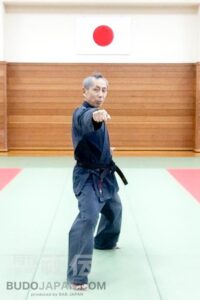
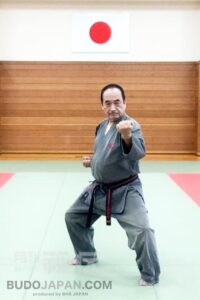
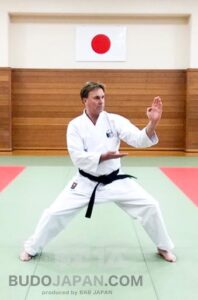
WANSHU
Is the name of several Katas in many systems of Karate including Isshin-ryu, Shotokan, Wado-ryu etc. The name Wanshu in Mandarin means “Excellent wrist” and refers to a typical technique of this form. The other way of writing this Kata means “Wang’s Series (or form)” and refers to the name of the Diplomat Wang (1621-1689) Wang was the leader of a large ambassadorial mission from China sent from the Qing Government in 1683 to the village of Tomari. A poet, Calligrapher, Diplomat and Martial artist in the Shaolin tradition of Fujian White Crane. This Kata is practiced in various Korean styles of Martial arts, such as Tang Soo Do and Soo Bahk Do. Wanshu is rather short but technically a difficult Kata, much different than the Kata Seisan or Ananku. Many of the techniques are with blocks and canters made simultaneously Wanshu has been traced back to 1695 which makes it about 300 years old.
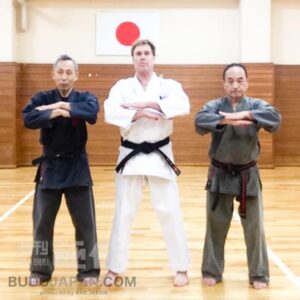
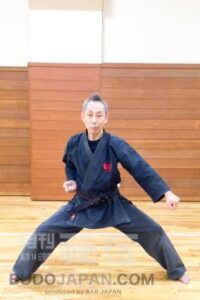
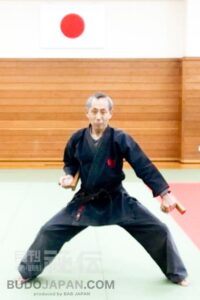
SEISAN
Literally means ’13’ some people refer to the Kata as 13 hands, ’13 fists’, 13 techniques, 13 steps or even 13 killing positions. Seisan is thought to be one of the oldest Kata and different versions are practiced in different styles of Karate. In my School we study this Kata from Ni-dan. (Second Black Belt)
Seisan is thought to be one of the oldest Kata being quite spread among other Nahata schools. Due to it’s difficulty, this Kata is often reserved for advanced students.
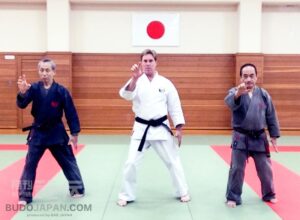
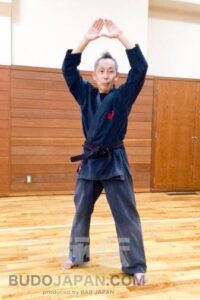
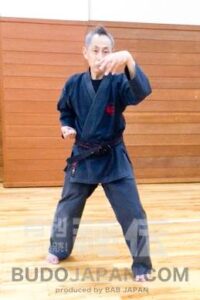
Passai also known as Bassai
Is the name of a group of Kata practiced in different styles of Martial Arts, including Karate and various Korean martial Arts including Taekwando, Tang Soo Do and Soo Bahk Do, there are several versions of this Kata. This Kata is generally known as Passai in Okinawan styles of Karate and Bassai in Japanese styles. This Katas focus is on the idea of changing disadvantage into advantage by strong and courageous response, switching blocks and differing degrees of power. The feeling of Kata should be precise, with fast execution of technique and attention given to appropriate balance between power and speed. In our School this Kata is Practice from Ni-dan to San Dan. It focuses on breathing, balance, stance and looks very cool in it’s last sequences of the Kata.
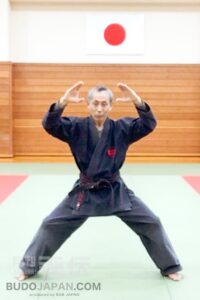
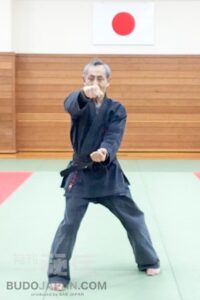

Kobudo
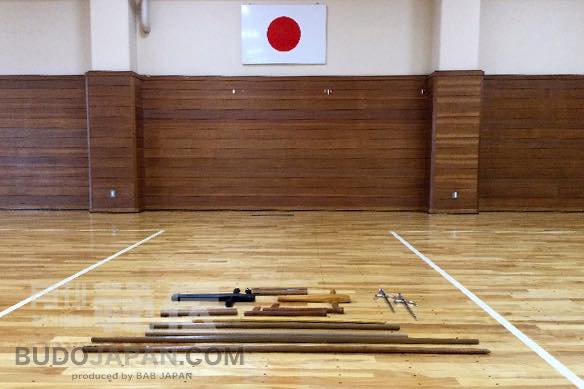
Okinawan Kobudo literally “old martial way of Okinawa” is the weapon systems of Okinawan Martial Arts.
Okinawan Martial Arts refers to the Martial Arts, such as Karate, Tegumi and Okinawan Kobudo, which originated among the indigenous people of Okinawa island. Due to its central location, Okinawa was influenced by various cultures with a long history of trade and cultural exchange, including Japan, China, and Southeast Asia, that greatly influenced the development of Martial Arts on Okinawa.
Weapons
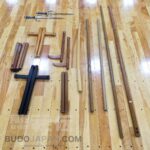 Okinawan Kobudō was at its peak some 100 years ago and of all the authentic Okinawan Kobudō kata practiced at this time, only relatively few, by comparison, remain extant. In the early 20th century, a decline in the study of Ryūkyū Kobujutsu (as it was known then) meant that the future of this martial tradition was in danger. During the Taishō period (1912–1926) some martial arts exponents such as Yabiku Moden made great inroads in securing the future of Ryūkyū Kobujutsu. Many of the forms that are still known are due to the efforts of Taira Shinken who travelled around the Ryūkyū Islands in the early part of the 20th century and compiled 42 existing kata, covering eight types of Okinawan Weapons.
Okinawan Kobudō was at its peak some 100 years ago and of all the authentic Okinawan Kobudō kata practiced at this time, only relatively few, by comparison, remain extant. In the early 20th century, a decline in the study of Ryūkyū Kobujutsu (as it was known then) meant that the future of this martial tradition was in danger. During the Taishō period (1912–1926) some martial arts exponents such as Yabiku Moden made great inroads in securing the future of Ryūkyū Kobujutsu. Many of the forms that are still known are due to the efforts of Taira Shinken who travelled around the Ryūkyū Islands in the early part of the 20th century and compiled 42 existing kata, covering eight types of Okinawan Weapons.
*Below are some of the Kobudo style Okinawan Weapons Our Shorin-ryu Karate School Practices.
Tanbo
The Tanbo, sometimes spelled Tambo, is a short staff (compared to a bo, or a hambo) made of hardwood or bamboo. Its length is determined by measuring from the tip of the elbow to the wrist. Tambo can be used in pairs. Today the Tambo is used by various martial arts, schools including Jujitsu, Aikido, Kobudo, Hapkido, etc.
Tambo are swung using the elbow or shoulder, or manipulated with the wrist. Many of the motions are similar to sword strokes. The Tambo can be deadly in skilled hands. The main use is to attack the outer edges of the human bones with speed and accuracy.
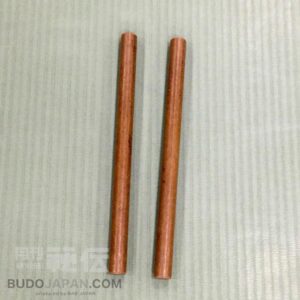
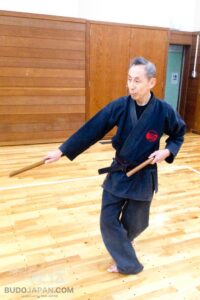
Tonfa
The tonfa may have originated as the handle of a millistone used for grinding grain. It is traditionally made from red oak, and can be gripped by the short perpendicular handle or by the longer main shaft. As with all Okinawan weapons, many of the forms are reflective of “empty hand” techniques. The tonfa is more readily recognized by its modern development in the form of the side handle police baton, but many traditional tonfa techniques differ from side-handle baton techniques. For example, tonfa are often used in pairs, while side-handle batons generally are not.
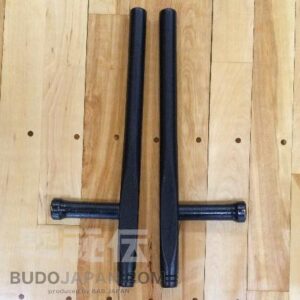
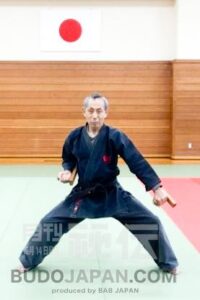
Jō
The Jō is a fascinating weapon. Simply constructed yet multifunctional. Practicing with it enriches any empty-handed fighting art. The techniques for Jō were reportedly invented by Muso Gonnosuke Katsuyoshi 1605, after he was defeated by the famous Swordsman Miyamoto Musashi (1584 – 1645). They fought each other in a duel sometime between 1608 and 1611. A Jō is an approximately 1.27 meter (4.2 ft) wooden staff, used in some Matial Arts. The Jo staff is shorter than the Bō. Today the Jō is still used by some Japanese Police Forces.
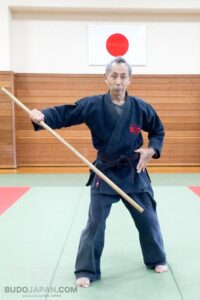
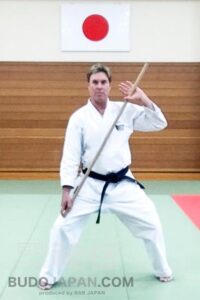
Bō
The Bō is a six-foot long staff, sometimes tapered at either end. It was perhaps developed from a farming tool called a tenbin: a stick placed across the shoulders with baskets or sacks hanging from either end. The Bo was also possibly used as the handle to a rake or a shovel. The Bō, along with shorter variations such as the Jo and Hanbo could also have been developed from walking sticks used by travelers, especially monks. The Bō is considered the ‘king’ of the Okinawa weapons, as all others exploit its weaknesses in fighting it, whereas when it is fighting them it is using its strengths against them. The Bo is the earliest of all Okinawan weapons (and effectively one of the earliest of all weapons in the form of a basic staff), and is traditionally made from red or white oak.
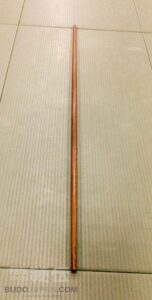
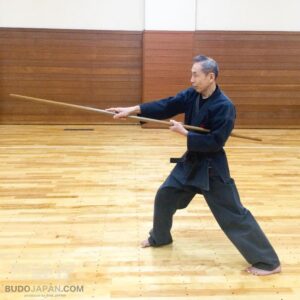
Sai
The Sai is a three-pronged truncheon sometimes mistakenly believed to be a variation on a small, hand-held rake a tool used to create furrows in the ground. This is highly unlikely as metal on Okinawa was in short supply at this time and a stick would have served this purpose more satisfactorily for a poor commoner, or Heimin. The Sai appears similar to a short sword, but is not bladed and the end is traditionally blunt. The weapon is metal and of the truncheon class with its length dependent upon the forearm of the user. The two shorter prongs on either side of the main shaft are used for trapping (and sometimes breaking) other weapons such as a sword or Bo. A form known as Nunti Sai, sometimes called Manji Sai (due to its appearance resembling the swastika kanji) has the two shorter prongs pointed in opposite directions.


Nunchaku
A nunchaku is two sections of wood (or metal in modern incarnations) connected by a cord or chain. There is much controversy over its origins: some say it was originally a Chinese weapon, others say it evolved from a threshing flail, while one theory purports that it was developed from a horse’s bit. Chinese Nunchaku tend to be rounded, whereas Okinawan ones are octagonal, and they were originally linked by horse hair. There are many variations on the nunchaku, ranging from the three sectional staff. The nunchaku was popularized by Bruce Lee in a number of films, made in both in Hollywood and Hong Kong. This weapon is illegal in Canada, Australia (unless a permit is held) and parts of Europe.
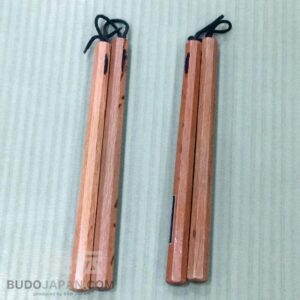
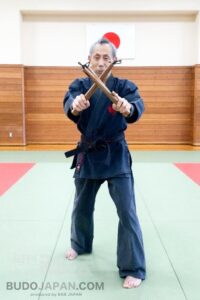
Kama
The Kama is a traditional farming sickle, and considered one of the hardest to learn due to the inherent danger in practicing with such a weapon. The point at which the blade and handle join in the “weapon” model normally has a nook with which a Bo can be trapped, although this joint proved to be a weak point in the design, and modern day examples tend to have a shorter handle with a blade that begins following the line of the handle and then bends, though to a lesser degree; this form of the Kama is known as the Natagama, The edge of a traditional rice sickle, such as one would purchase from a Japanese hardware store, continues to the handle without a notch, as this is not needed.
